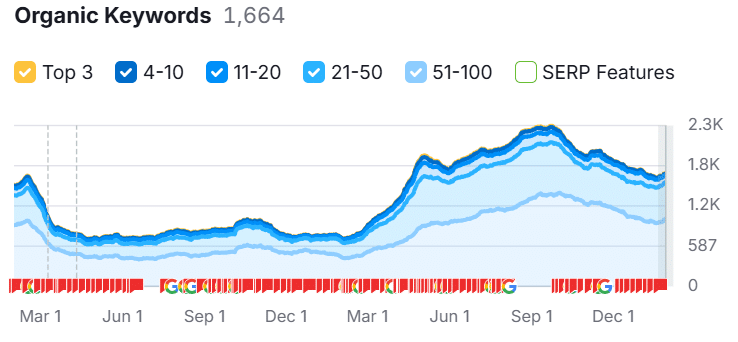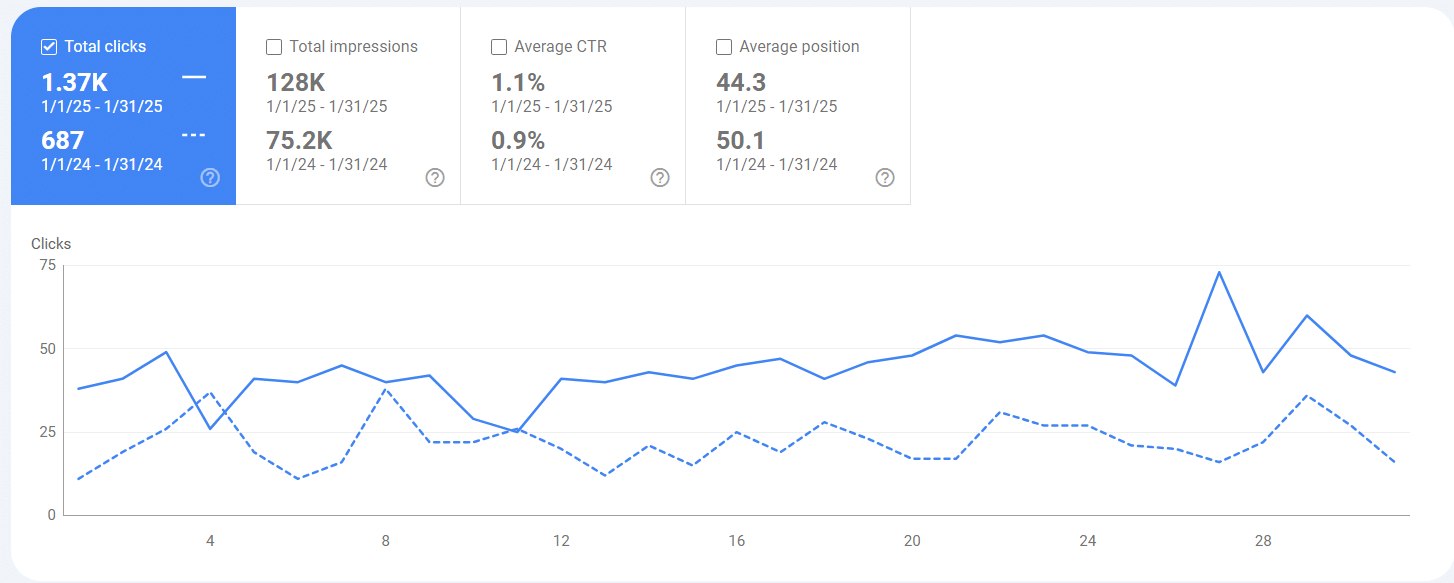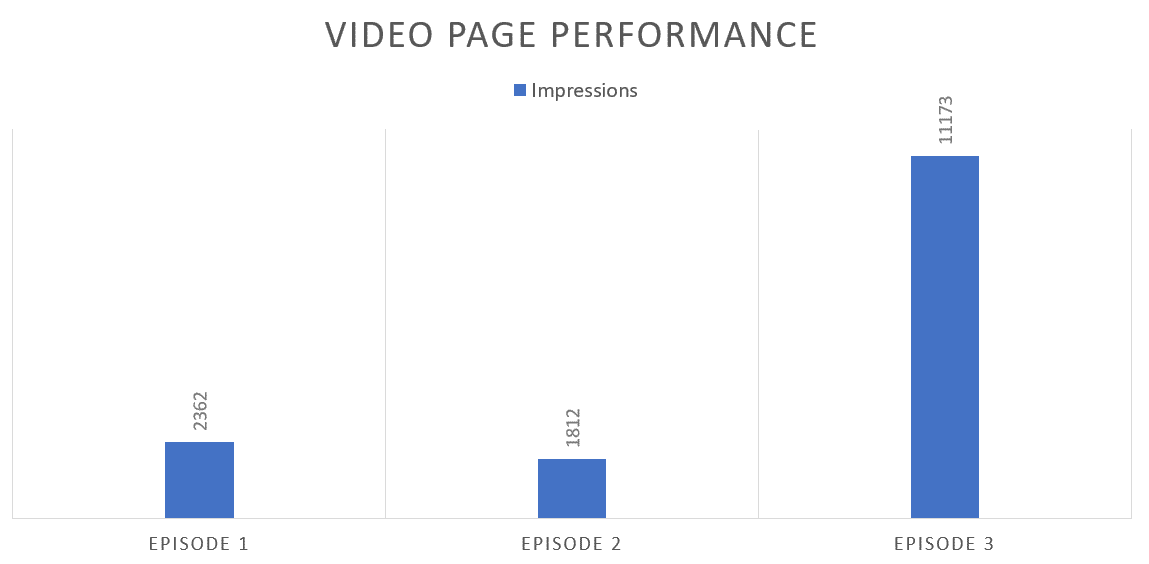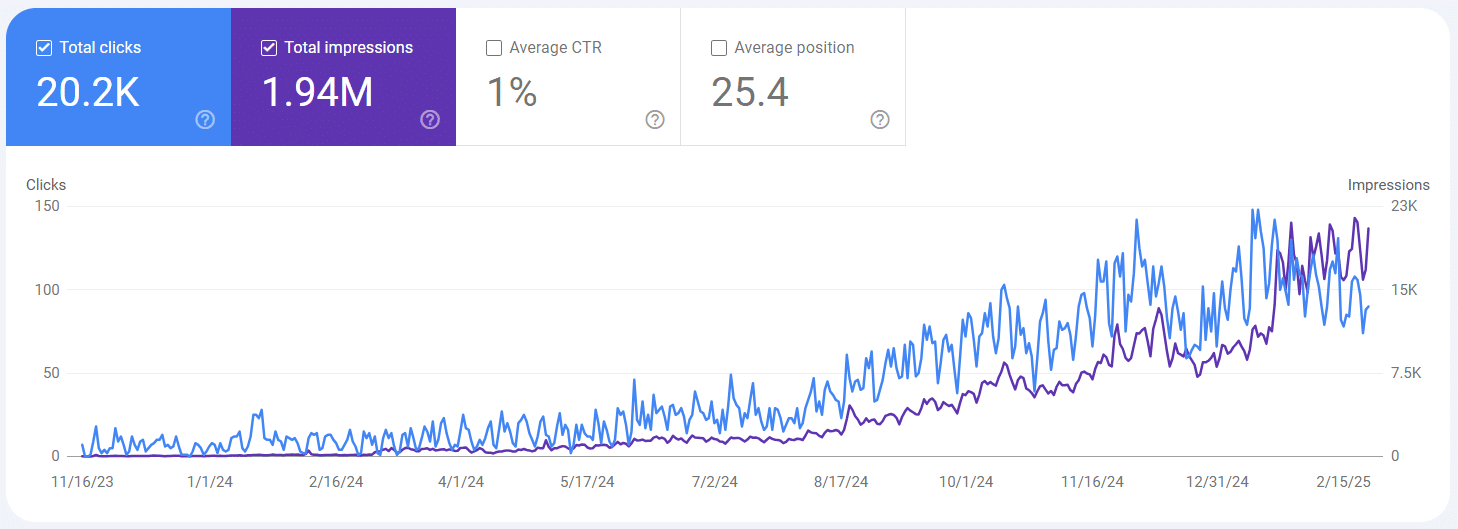Why SEO fundamentals are 10x more important now

Over the last few years, AI has upended many aspects of our world, including search.
The rise of generative AI threw many of us for a loop.
If you’re one of them, still scrambling to make sense of this new normal, you might be wondering: what matters most in SEO now?
The answer may surprise you.
It isn’t fancy new tricks – it’s mastering the fundamentals that drive traffic and rankings.
As AI answer engines, like ChatGPT search and Google AI Overviews, become part of everyday life, they’re changing how people interact with search.
But at their core, these tools rely on some principles that have guided SEO for years:
- A strong technical foundation.
- High-quality content.
- Effective use of keywords.
- Authoritative backlinks.
These same fundamentals still determine which content rises to the top.
If you’ve been wondering how to adapt your strategy in this new era, let me tell you it’s not about chasing trends. It’s about doubling down on what works.
How AI tools leverage SEO fundamentals
Search engines and AI tools like AI Overview, Perplexity, and ChatGPT search are changing how we find information online.
These technologies provide quick answers by pulling directly from your content.
But they’re still using logic that I’d call “SEO fundamentals” to decide which content is valuable enough to include in their outputs.
- AI Overviews are a more complex featured snippet that dynamically shows multiple references instead of one. Clearly structuring your content to answer keywords and ranking highly in search results is already known to help you appear in these AI overviews.
- ChatGPT search isn’t traditional search, but is informed by similar principles. It likes well-organized, authoritative content that’s helpful to users — exactly what SEO fundamentals encourage.
Sites that fail to provide clear, trustworthy information that’s helpful to their users is less likely to get surfaced by these AI systems.
The pillars of SEO fundamentals
Technical SEO: A solid foundation
It doesn’t matter how optimized your content is if classic search engines or the latest AI can’t find it.
Technical SEO ensures your site is structured so crawlers can access and index your content without issues. Think of it as the foundation of a house; without it, everything else falls apart.
Even the best content won’t work if it’s buried under layers of errors or inaccessible to search engines and crawlers. A technically sound site gives your content the best chance of being visible and useful.
Just a quick example from a few technical improvements we have seen multiple huge impacts in performance.
Indexability Improvements
At my agency, Velir, weWe have a client whose website has more than doubled with a 135% YoY increase in organic site visits. The main driver of this is two things — both connected with indexability. Implementing canonical tags properly on the website and un-gating content that had been no-indexed previously.

Canonical tags
Canonical tags are vital for helping to prevent duplication, especially on large websites. They are a tag in the code that tells search engines which version of a page is the “true” version. Being able to control the “true” version of a page means you can run an A/B test without worrying about keyword cannibalization or duplication.
- Every page should have a canonical tag.
- If there isn’t a duplicate version of the page make it self-referencing.
- We include canonical tags on PDF pages as well.
Un-gating content
Running a content inventory is always helpful to understand what pages exist on your website. Using a tool like Screaming Frog to get a complete list allows you to find opportunities or old outdated content.
For the same client’s site, we found that thousands of resources were marked as no-index.We decided to allow them to be indexed, which caused a significant increase in keywords and organic traffic going to the website.
Indexability checklist:
- Add canonical tags
- Set up your robots.txt file
- Submit your sitemap to Search Console and Bing Webmaster Tools
Core Web Vitals
Core Web Vitals are a ranking factor and improving them can lead to solid results.
Running a check for Core Web Vitals is something you should do regularly. We found this client’s website was very slow. They set up the website with a custom theme that just wasn’t nearly as efficient as other options. By changing their theme, reducing image sizes, and implementing a CDN we helped them significantly improve their Core Web Vitals.
The results of these changes were a 123% increase in organic revenue and a 203% increase in traffic to the website. This was also done in conjunction with content optimizations which led to a 653% increase in conversions.
Schema
Schema will help you display dynamically in search results and tends to act as a superhighway of information for crawlers. We have found that implementing even a basic schema can help boost your search rankings.
For example, our client saw a 288% increase in first-page keywords in one year. One of the major changes we made was implementing schema on the website. After we implemented this you can see the number of total SERP features increased by 193% YoY.


A list of basic schema:
- WebSite
- Organization schema
- Article
- Webpage
- Video
Checking your schema by using the rich results test.
Metadata
There has been some debate about the importance of metadata as Google has been automatically rewriting meta descriptions and even some page titles. We’ve found that improving metadata on a website to follow best practices still improves organic visibility and rankings.
Just look at the results for this website. The only work we did for it was rewriting metadata to follow length best practices. No fancy optimizations.
Just these updates led to a 55% increase in first-page keywords YoY for the client.

Why indexability is critical
The biggest issues I’ve ever seen hold back a website are indexability issues. Always check your robots.txt file, sitemap, and canonical tags. Obviously, run regular site audits for other issues but those are the first places to look. It’s already known that websites not indexed by Bing will not appear in SearchGPT.
Indexability checklist:
- Are there canonical tags?
- Is your robots.txt file set up properly?
- Have you submitted your sitemap to Google Search Console and Bing webmaster tools?
- How are the core website vitals?
- Is all of your key content indexable?
- Have you added all of the relevant schema markup to your site?
- Is your metadata optimized for SEO best practices?
Quality content: Answering questions and providing value
Any real business that grows does one simple thing, it provides value (perceived or real). That fundamental fact should be applied to any content approach for SEO, YouTube, or TikTok. For SEO this means creating content that answers questions or takes complex issues and makes them easy to understand.
Yes, you can follow trends but it’s important for SEO that the content you create provides something of value to your audiences.
Good content should be trustworthy, backed by sources, and written with purpose. It should be well-argued, well-written, and structured so users can understand and crawlers can process. In other words — create content that doesn’t suck. But how do you do this while ensuring it’s still optimized?
Using keywords in vital areas
There is a really simple formula I teach to my analysts that I’ve found works well.
- Put your primary keyword upfront in your titles.
- Add your unique selling point (USP), something to help improve CTR in results like “expertly researched.”
- Use a modifier like 2025, something to make it more relevant to the reader.
Here’s our super simple formula:
[primary keyword][usp][modifier]
We use this exact formula when writing page titles and H1 headers.
Helpful and natural internal links
Internal links are something that I see a lot of newer SEO analysts forget to implement, but it can lead to significant bumps in organic traffic and engagement. When you use internal links you make it much easier for crawlers to discover content and users to navigate the site to find helpful information.
When done correctly internal links can help boost visibility as they did for this client website which saw a 144% YoY increase in organic clicks and a 113% YoY increase in first page keywords.


This website has a blog that posts new content regularly. However, it rarely includes internal links to other resources. We mapped out these resources and categorized them by topic.
We then ensured that all of the pages in each category were internally linked to each other, which helped the site to become a topical authority.
You can do the same with our simple internal linking process:
- Map out all your pages in an Excel sheet.
- Categorize pages based on topics.
- Ex. Dog food, dog toys, dog leash
- Review old posts to find times that make sense to naturally link.
- Ex. “Keeping your dog busy you could use the best dog toy you have.”
- This helps you find opportunities at scale.
- Add those internal links to the pages.
Provide Multiple Ways to Engage with Content
Allowing your audience to engage with content how they want to has proven to drive more awareness. For example, all we did for one client was add transcripts to pages that were video pages, and they saw a 10x increase in impressions.
Below are three pages. The first two had videos without transcripts and the third included a transcript to the page with little to no other differences.

Keywords: Speaking your audience’s language
Keywords are a fundamental part of SEO. At its heart, keyword research isn’t about optimizing for search engines; it’s about understanding your audience and what questions they have.
Without a clear picture of the terms and phrases people are using, you risk creating content that misses the point entirely.
Using arbitrary language without research can leave you disconnected from your audience.
For example, Velir had a client in healthcare who had two websites. One was focused on patients; the other was focused on doctors. What we found is these audiences used different keywords to search and wanted different types of content.
A doctor would search using scientific language “cardiac arrest” whereas a patient would search “heart attack.” Knowing this, we updated our content and keywords so each site spoke to the correct audience.
Implementing that keyword strategy led to a 35% YoY increase for the doctor-focused site and an 18% YoY increase for the patient site.
Backlinks: Earning mentions through good content
Backlinks are one of the strongest indicators of authority in SEO. But in today’s world, it’s not just about getting links; it’s about earning them by creating content that others want to mention and share.
When you create high-value content like in-depth reports, independent research, or any resources that are hard to replicate, you become a trusted source of information. This not only gets you backlinks from other good sites but also boosts your credibility across search engines and AI tools.
The best approach to backlinks I use is foundational (citations), guest posts, and social fortress.
1. Foundational links
Foundational links are the types of backlinks every business should have. Many people call these citations.
These are links from directory websites like Yellow Pages. Be sure your website appears in ones that are industry-specificFor example, in the mental health space Psychology Today is a foundational link for many organizations.
While foundational links won’t provide your website with a ton of authority, they are still very important to help provide a cheap and easy way to get your brand’s name out there.
2. Social fortress
While this isn’t exactly backlinks, having a social presence is huge to make your business look real. Fake businesses and scams won’t want to go through the effort of setting up all of this information so it’s a great way to show you are legitimate.
By having Facebook, LinkedIn, Instagram, Twitter, and TikTok you show you are a real business. This is also where many LLMs are training their data. Have a presence there and be sure to post regularly. Also, ensure all of these platforms connect and reference each other.
3. Guest posting
Guest posts are still a great way to increase organic authority for target keywords. They provide value for a content site in exchange for linking back to your resources. You want to ensure you don’t end up on a spammy website, which is why we follow this guest posting criteria for websites we get featured on:
- The site needs to have at least 1,000 monthly visitors.
- This reduces the risk of ending up on spammy websites that are just high-authority private blog networks (PBNs).
- Should be industry-relevant or very high authority if they are a general website.
- The link back to your website needs to be do-follow to pass authority.
- No-follow links are not going to help you rank higher.
We helped a newly launched website do this simple three-step process and the results speak for themselves.


From a purely logical perspective the more you’re mentioned the more likely someone is to use your information when answering questions.
One more logical leap here is that this then increases your chances of being featured in AI-generated content as these systems favor widely mentioned, trusted content.
Essentially, the more people are talking about how good your information is the more likely you are to be the answer AI features.
How to get backlinks by being a resource
- Create original research: Conduct surveys, analyze trends, or compile unique data that others in your industry can reference.
- Use shareable visuals: Infographics were widely used to get more links about five years ago but the thing is research and data visualization still work.
- Develop in-depth guides: Publish evergreen content that positions you as an expert in your niche.
- Pursue quality over quantity: A few high-quality backlinks from good sites are worth more than a hundred low-quality ones.
- Promote strategically: Share your content with industry influencers or partner with relevant organizations to get noticed. Research and reports won’t get themselves to others in the industry so shamelessly plug your stuff.
By creating content that others want to reference, you get backlinks and authority in the eyes of users and algorithms.
Thrive in an AI-driven world by focusing on fundamentals
SEO is evolving. The rise of AI tools has brought new challenges.
But like Jeff Bezos says “challenges are just opportunities in work clothes.” By getting back to basics with your SEO strategy you can thrive in an AI-driven world and stay one step ahead of your competitors.
Double down on what has always worked: creating good, relevant, and accessible content.
Here’s a reminder of how to do it.
1. Add structured data
Schema markup helps search engines and AI models understand your content quickly and accurately. AI tools need structured data to crawl large amounts of content and display it to users. Adding schema to your site makes it easier for your content to be surfaced in search results and AI outputs.
- Tip: Use ChatGPT to generate complex schemas. Many users have used AI tools to create advanced markup that passes Google’s Rich Results Test. It can read the page and fill it out for you.
2. Publish to social media and aggregators
AI models openly admit to training their datasets on data from Facebook, Reddit, and other aggregators. By publishing your content on these platforms you’re putting your data directly in front of the systems training the AI models. This not only increases your visibility by building a social fortress but also gets your content into the broader AI knowledge base.
- Tip: Share your content across all social platforms and submit to aggregators where relevant to your industry. Being in these spaces means your voice is part of the data AI systems use.
3. Use original data and statistics
AI and users love reliable, authoritative data. Publishing original research, creating independent studies, or offering expert quotes and statistics makes your content unique. AI tools often favor content with hard-to-replicate data so your content is a go-to source for training and referencing.
- Tip: This doesn’t need to be huge clinical trials, just add real-life examples to your content that are unique to you even if it’s just a few screenshots. Cite your sources if you use them.
4. Keep content fresh and up to date
Updating your content is easier than ever with AI tools. Regularly updating content tells search engines and AI models it’s still relevant. Users also prefer up-to-date information which increases engagement and trust.
- Tip: Use ChatGPT to rewrite your intro paragraph or point out references to old research then update it.
5. Check AI results
To see how AI tools display information in your industry you need to test them yourself. Use these tools every day. Make searches and see what type of results AI is favoring. Try to track your findings to see if you can find consistency.
Personally, I’ve seen different results for different types of searches and industries. For example, historical or general informational searches show Wikipedia as a source or as textbook-style information like Khan Academy.
For local businesses, I’ve seen individual sites get shown or directories/industry listing sites. You want to stay on top of these trends because that is how you will find specific tactics that work.
- Tip: Regularly use AI tools like Perplexity or ChatGPT to search for your industry keywords. Look at the patterns in the results to find new opportunities you can pursue represented or content you can optimize.
Catering to generative AI with your SEO means being proactive, flexible, and focused on value. By adding structured data, sharing content, doing original research, updating your content, and checking AI results you can stay ahead of the game and win in the long term.
SEO is evolving and the rise of AI tools like ChatGPT and Google’s SGE have changed the landscape. While some tactics may need to change, the fundamentals of SEO not only remain relevant, they’ve become essential.
SEO fundamentals checklist
- Audit Technical SEO: Fix crawlability issues, and errors and optimize your site structure for accessibility.
- Create quality content: Answer user questions with valuable, trustworthy, and well-structured content.
- Use keywords: Do keyword research to understand your audience’s language and intent.
- Build backlinks: Create unique, shareable content like reports or independent research to get mentioned and cited.
- Use structured data: Add schema markup to your content so AI tools and search engines can consume it.
- Publish beyond your website: Share your content on social media and aggregators where AI models train their data.
- Do original research: Publish data, stats, and findings to establish your authority and credibility.
- Update content: Regularly refresh your content with the latest news, insights, and information.
- Check AI results: See how AI tools display industry results to find optimization opportunities.






Recent Comments